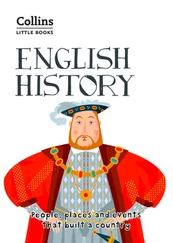Hereford George - Battles of English History
Здесь есть возможность читать онлайн «Hereford George - Battles of English History» — ознакомительный отрывок электронной книги совершенно бесплатно, а после прочтения отрывка купить полную версию. В некоторых случаях можно слушать аудио, скачать через торрент в формате fb2 и присутствует краткое содержание. Жанр: foreign_antique, foreign_prose, на английском языке. Описание произведения, (предисловие) а так же отзывы посетителей доступны на портале библиотеки ЛибКат.
- Название:Battles of English History
- Автор:
- Жанр:
- Год:неизвестен
- ISBN:нет данных
- Рейтинг книги:5 / 5. Голосов: 1
-
Избранное:Добавить в избранное
- Отзывы:
-
Ваша оценка:
- 100
- 1
- 2
- 3
- 4
- 5
Battles of English History: краткое содержание, описание и аннотация
Предлагаем к чтению аннотацию, описание, краткое содержание или предисловие (зависит от того, что написал сам автор книги «Battles of English History»). Если вы не нашли необходимую информацию о книге — напишите в комментариях, мы постараемся отыскать её.
Battles of English History — читать онлайн ознакомительный отрывок
Ниже представлен текст книги, разбитый по страницам. Система сохранения места последней прочитанной страницы, позволяет с удобством читать онлайн бесплатно книгу «Battles of English History», без необходимости каждый раз заново искать на чём Вы остановились. Поставьте закладку, и сможете в любой момент перейти на страницу, на которой закончили чтение.
Интервал:
Закладка:
There is no evidence that Edward had formed any coherent plan of operations. Able tactician as he showed himself at Crecy, he was no strategist; indeed no one in that age had any idea of strategical combinations, though of course it is easy after the event to see that a particular direction given to an army was or was not judicious from this point of view. This invasion of France might have been an extremely brilliant stroke. The English command of the sea made it feasible to land almost anywhere; the main French army was engaged in the south-west: there were no preparations for attempting to meet invasion anywhere else. Had Edward landed near the mouth of the Seine, at the nearest point to the capital, and marched straight on Paris, he would have had the king of France almost at his mercy, for Paris might have been in his hands before the duke of Normandy could come to its rescue. Instead of this, Edward landed at the extremity of the Cotentin peninsula, and then marched in a leisurely way through Normandy, capturing and plundering town after town, there being virtually no resistance. The absolute vagueness of his intentions may be gathered from his having sent away his fleet, laden with the booty of the Norman towns, thus depriving himself of the means of retreat in case of need. If Froissart is to be believed, he had already determined to march on Calais and attempt to seize it; but if so, it is still more difficult to explain his having landed in the Cotentin, Calais being within a march or two of Flanders, where if he had not met with much support he would have at least found a friendly reception. The only thing which looks as if he really meant to go towards Calais is that having reached Louviers, he seems to have marched some way down the Seine again towards Rouen; but this may have been in the hope of being able to plunder the capital of Normandy. The French meanwhile had broken down all the bridges on the Seine, which can only have been in order to prevent the English from extending their ravages to the right bank of the Seine, as it was obvious that they could reach the coast as easily on one side as on the other. Whatever may have been his original plan, or want of one, Edward, unable to cross the Seine in Normandy, did what he ought to have done weeks before, and marched up the left bank towards Paris. The king of France had used the breathing time unwisely allowed him to collect an army, which is said to have amounted to 100,000 men. Why he made no attempt to interfere with Edward earlier is a mystery. The English king marched unopposed to Poissy, a few miles below Paris, and there amused himself, while the bridge was being rebuilt, in ravaging the country to the very gates of the capital; he no doubt knew that the city was by this time full of soldiers, and therefore not open to attack. On August 16 the bridge was finished, and Edward crossed the Seine, his advanced guard having a sharp but successful fight with a large body of men coming from Amiens to join king Philip. Seeing that the huge French army was gathered at St. Denis, on the right bank, nearly half-way to Poissy, it is equally mysterious to find Edward crossing the Seine close to an enormously superior force, and Philip making no attempt to take him at a disadvantage. However Edward had by this time resolved on making for Flanders, and marched hastily northwards, sending out a strong detachment to endeavour to seize some point of passage over the Somme. As was natural, these were all broken or defended; Edward went on down the Somme, with an enemy of four or five times his strength behind him, till on August 23 he came opposite Abbeville, below which the river becomes a tidal estuary. The town was fortified and garrisoned, and there was a large body of troops on the right bank: it looked as if Edward's reckless movements had led him at last into a trap, as if the king of France had achieved a success which his own military management had by no means deserved. In the nick of time a peasant told Edward of a ford some way below Abbeville, broad and firm, but available only at low water. Early on the morning of the 24th the English army crossed by this ford, the archers giving a foretaste of what was to happen at Crecy by completely driving off the French force stationed to defend it. They were barely across when Philip was upon them; but the rising tide prevented pursuit.
Edward was now safe: he had only a short march before him to reach Flanders. Here however the spirit of chivalry took possession of him: he chose to turn and await battle, saying that he was now in his own heritage, 23 23 He was in the county of Ponthieu, which had been the portion of Margaret of France, second wife of Edward I. He was not descended from her, but from Eleanor of Castile: there does not however seem to have been any provision for Ponthieu being inherited by Margaret's children.
and would defend it against the usurper. Accordingly he encamped on August 25 near the little village of Crecy, and selected a position in which to give battle, into which he moved the next morning. The army was divided as usual into three "battles," each consisting of about 800 men-at-arms and 2000 archers, besides light-armed infantry, chiefly Welsh. The prince of Wales commanded the first, the earl of Northampton the second: the king kept the third, which was to act as a reserve, under his own immediate orders. The exact position is not easy to determine: but it was on a piece of sloping ground, with a wind-mill on the upper part of it at which the king took up his station, facing the south-east or nearly so. The French attacked in such a hasty and irrational manner that it is not safe to infer anything from what they did: but certainly they did not attempt, with all their vast superiority of numbers, to turn Edward's position. A competent tactician would most probably have taken care that his flanks were protected in some way; and therefore it is probable that the English right rested on Crecy, through which flows the little river Maye, in which case its left may have been covered by the adjoining hamlet of Wadicourt. This position is shown in the accompanying map, not as ascertained, but as answering well to the conditions.
The essential novelty in Edward's tactics, the fact which makes Crecy an epoch in the history of the art of war, was that having to fight with very inferior numbers he discerned an effective way of combining the two elements of his army. He caused all the men-at-arms to dismount, and placed the horses with the baggage in an enclosed park in rear. The men-at-arms were to serve simply as spearmen, like the Scots at Falkirk and Bannockburn: they were to form the solid line of resistance, while the archers shot down the assailants. There is a certain discrepancy between the accounts, as to the position of the archers. Froissart says that they were drawn up in front, after the fashion of a harrow ( herse ). 24 24 Herse has another and less familiar meaning, which still better corresponds to the formation indicated – the stands used in churches for seven candles, the centre one forming the apex, and those at the sides gradually lower.
Baker of Swinbrook says very precisely that they were put on the wings, so as not to be in the way of the men-at-arms, nor meet the enemy in front, but shoot into their flanks. The two may be reconciled, if we bear in mind that the archers would naturally not be drawn up in the same straight line with the men-at-arms, but thrown forward at an angle, so as to allow them to shoot more freely at the advancing enemy. Moreover it is certain that the prince of Wales' "battle" was on the right, in front, Northampton's on the left, a very little further back, perhaps because of some slight irregularity in the ground. If each division had part of its archers on each flank, thrown somewhat forward, the two inner lines of archers would meet at an angle: and the whole front would present an appearance not very unlike a harrow. 25 25 This theory is so far as I know novel, and I put it forward as a suggestion for what it may be worth. It explains, I venture to think, the extraordinary success of the English tactics, and it contradicts no ascertained facts. Every one who knows a little about drill will see that in this formation the archers would be able to change the direction of their shooting with perfect ease, and without interfering with each other. The archers cannot have been on the flanks of the whole line only, or their arrows, long as the range was, would not have told across the whole front. They could obviously move with ease and rapidity, and it is quite possible that they may have formed a line in front of the dismounted men-at-arms, when no attack was impending, as for instance to encounter the Genoese, and have fallen back to the herse when the knights were seen preparing to charge.
Интервал:
Закладка:
Похожие книги на «Battles of English History»
Представляем Вашему вниманию похожие книги на «Battles of English History» списком для выбора. Мы отобрали схожую по названию и смыслу литературу в надежде предоставить читателям больше вариантов отыскать новые, интересные, ещё непрочитанные произведения.
Обсуждение, отзывы о книге «Battles of English History» и просто собственные мнения читателей. Оставьте ваши комментарии, напишите, что Вы думаете о произведении, его смысле или главных героях. Укажите что конкретно понравилось, а что нет, и почему Вы так считаете.












